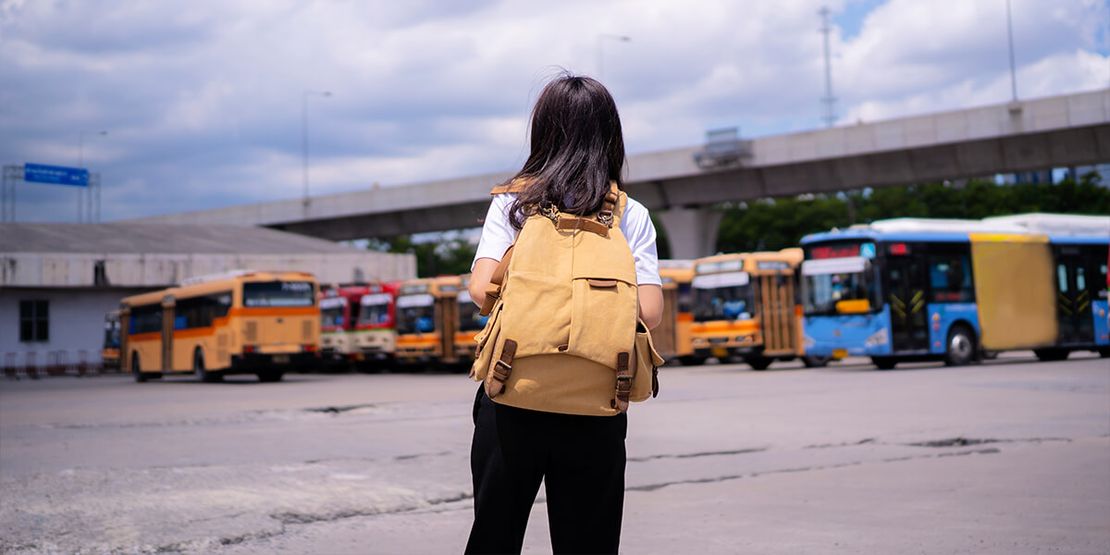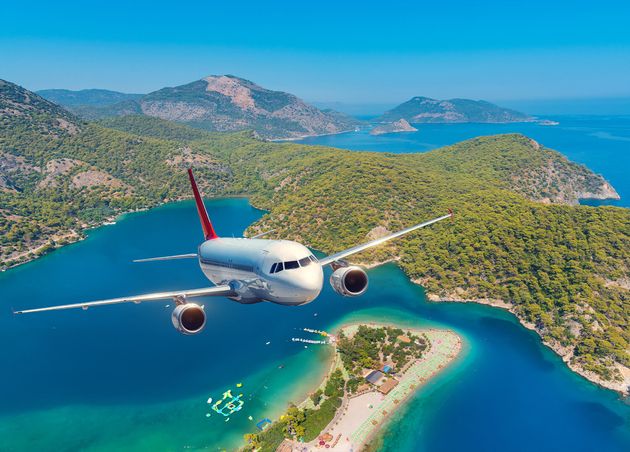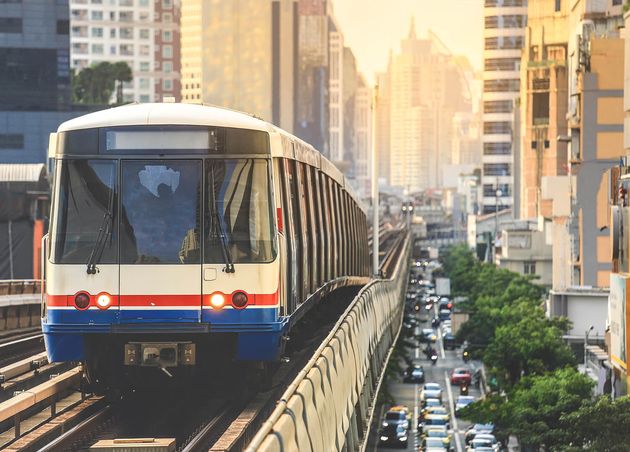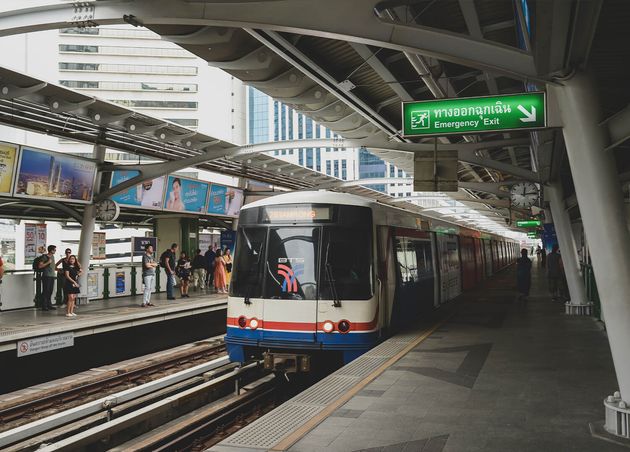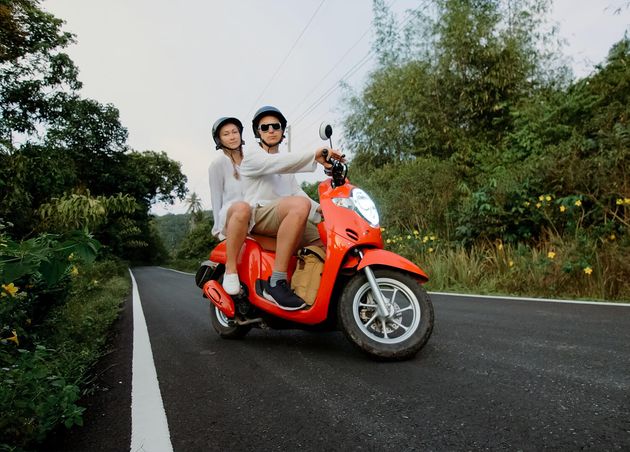Thailand Transport System: Everything You Need to Know
Thailand, the dreamy beachside paradise, has governed to protect its artistic honesty despite being a leading tourist destination. You can discover everything here, from squeaky-clean seasides to dense wildernesses, historical sanctuaries to coral reefs, temples to floating markets, and the aromatic and delicious food to treat your taste buds.
But, we prefer to quickly figure out how to achieve all these incredible destinations by learning about Thailand's means and transportation system. When you’re in a destination, appreciating the land and the culture, everything is thrilling and fresh. But getting from place to place can sometimes be hard, confusing, or even annoying.
Undoubtedly, Thailand has reasonable yet comfortable transportation facilities that can get you through its cities and various destinations. While rural area transport contains bicycles and motorbikes, buses and air travel overlook the cities and other parts.
However, getting around Thailand is effortless, simple, and always stress-free. So let’s get you through a detailed and precise guide to help travelers to learn transportation in Thailand. Read on!
Things to Know About Transport System In Thailand
- Getting around Thailand: Tuk Tuk, Taxi, Motorcycle Taxi, Songthaew, Bus, Bangkok BTS Skytrain, Bangkok MRT Subway, Train
- Transportation in Thailand is extremely reasonable, up to just $1.00-$2.00 per day.
- Thailand's transportation system is mostly quite good
- You have common Tips for Transportation in Thailand
- Study the apps to easier the Travelling in Thailand
- Good standard road conditions
- Left-hand driving
Transportation in Thailand
Extensively, travelers manage to attend identical paths throughout the country; the planes, trains, buses, and ferries between popular cities are seasoned and consistent. Many people also speak English in touristy areas, so it is simple to ask for assistance if you want it.
However, transportation in Thailand is always hassle-free and incredibly affordable. You can explore long-haul flights to Krung Thep Maha Nakhon (Bangkok), endure overnight bus journeys across the country, and zip around a city in a tuk-tuk, all at remarkably affordable prices.
Thailand is a highly stunning destination that has become very well-connected to the rest of the world. So whether you are flying to Thailand from the other side of the world or almost passing over the border overland from a neighboring Southeast Asian country, you shouldn’t have any difficulties arriving in this enthusiastic country.
Air Travel to Thailand
Flying in Thailand is simple and often affordable. This is because so many international airlines connect Thailand with cities worldwide. So if you scour the exact places, you can discover flights that won’t break the bank.
Utilizing a search engine such as Skyscanner or Google Flights is beneficial, as you can select a specific month for your departure date and view a calendar displaying daily prices. So, for example, if you plan to travel to Thailand and prefer between May and October, you will recoup even extra cash on flights because prices are inclined to lower during the offseason.
Strive to pack as minimally as possible for your flight to Thailand. Opting for carry-on bags can only save you money on baggage fees and enhance travel comfort.
Some main International airports in Thailand
- Suvarnabhumi Airport
- Don Mueang International Airport
- Chiang Mai International Airport
- Phuket International Airport
- Hat Yai International Airport
- Mae Fah Luang-Chiang Rai International Airport
🧑🎓 Quick Trivia!
Thailand has the second-highest rate of fatalities related to road accidents. The total number of deaths surpasses 25,000 annually, 33% of the country’s death toll.
Overland Travel Access to Thailand
There are multiple boundary crossings between Thailand and its four neighboring countries, Myanmar, Laos, Cambodia, and Malaysia. Suppose you arrive in Thailand by train or bus from any country. In that case, the boundary-crossing procedure isn’t much different from the border crossing at the airport.
Immigration authorities will punch your passport, and you’ll get a 30-day visa on arrival approval if you arrive in Thailand with a car or motorbike that is yours or a rental. In this situation, you'll need to present your international driver's license and vehicle registration, as well as your vehicle insurance to the border officials.
Border crossings can vary from quick and simple to lengthy, especially if there's substantial traffic. As a precaution, it's advisable to have an ample supply of snacks, water, and local currency on hand if the border crossing is more time-consuming than anticipated.
Entry Requirements for Visitors
Some visitors to Thailand will require a visa, which you can pertain to online before arriving in the country or at the airport upon entrance. A Thailand tourist visa goes for 30 USD; of course, you must have a legal passport for your stay.
More than 64 countries have established visa-exempt agreements with Thailand, allowing residents of these countries to enter without a visa. If your nationality is included in this visa-exempt list, you can visit Thailand without the need for a visa and stay for up to 30 days. Check the Thai embassy website for your nationality on the visa-exempt list.
Getting Around Thailand
Once you enter Thailand, traveling within the country is relatively easy. It has become such an outstanding tourist destination that a well-developed public transport system offers you where you desire to go.
Long Distance Transportation
For traveling long distances within Thailand, you have various options. You can choose the one that suits your travel itinerary and budget.
Travel in Thailand by Air
Flying is one of the shortest and most straightforward means to get around Thailand. Whether journeying from Bangkok to the northern city of Chiang Mai or heading to the islands in the south, travel's quite a distance. So rather than sitting on a bus or train for ten or more hours, catching a 1-hour flight to the other side of the country is worth catching.
In cities such as Chiang Mai and Bangkok, the airports are conveniently located just 20-30 minutes from the city center. It's recommended to arrive about an hour before your domestic flight. Flying frequently is an efficient way to travel within Thailand.
The country offers a variety of budget airlines, allowing you to secure affordable domestic flights for as low as $20. Cost-effective flying options for navigating Thailand include Thai Lion Air, Air Asia, and Bangkok Airways. There are also others like VietJet, Nok Air, Thai Airways, and Thai Smile.
Remember that these low-cost transportations are inexpensive because they give the bare minimum. You’ll have to spend on food, drinks, and checked baggage. Air travel is adequate for travelers who want to watch a lot of the country in a short time.
Travel Across Thailand by Train
The train can be appealing for those who have a longer time to travel in Thailand because it lets you see more of the countryside. In addition, trains are not more costly than buses and are much more relaxed. But the tickets are inclined to sell out, so try to book yours at least a few days in advance.
You have the option to choose from first, second, or third-class tickets, each offering a different level of comfort as you journey through picturesque landscapes. Taking the overnight train from Krung Thep Maha Nakhon (Bangkok) to Chiang Mai is an experience characterized by the rustic charm of the old tracks and breathtaking scenic views along the way.
Though trains are inclined to be very reliable in many countries, however in Thailand, they are constantly late, or the trip takes longer than predicted. Train travel is best for travelers with a bit of time to skimp on and to need a more ample and flexible voyage. Trains are a very safe way to get around Thailand.
Bangkok BTS Skytrain
The Bangkok Mass Transit System (BTS) Skytrain gives a formal railway experience and is an endorsement in disguise for daily passengers bored by daily Bangkok traffic. This method of transportation in Thailand is one of the greatest cheap and quick means because you beat traffic.
The Skytrain offers a regular, reliable, and swift travel experience from 5:00 AM to midnight from Monday to Friday, covering various parts of the city. The Airport link trains operate between 6 AM and 12 AM.
Bangkok MRT Subway
Similarly known as the Blueline, the MRT subway is an underground railway network covering several parts of Krung Thep Maha Nakhon (Bangkok) that are elusive via the Skytrain. This railway system provides reasonable yet quick travel options by halting at 18 stations and delaying the congested traffic via roads. Serving from 6:00 AM till midnight, five days a week, dismissing Saturday and Sunday, it divides the Skyline at many destinations.
Bus Travel through Thailand
Buses offer a more budget-friendly option than trains or planes, but they come with longer travel times. The most common long-distance routes originate from Krung Thep Maha Nakhon (Bangkok), leading either north to Chiang Mai or south to Krabi. These trips typically range from 500 to 1,500 Baht. For dependable and secure travel, the government-subsidized transport company BKS operates some of the most trustworthy bus services, ensuring safety, comfort, and reliability.
Overnight buses are particularly convenient for extended journeys, such as the 12-hour ride from Krung Thep Maha Nakhon (Bangkok) to Chiang Mai. In addition, buses are the best alternative for travelers hoping to recoup the most money. But don’t put any valuables in your check-in bags. Moreover, keep your money locked away in money belts or zipper pockets, and rest with your day backpack on your lap and padlock it.
Ferry Service to Thai Islands
If you visit any Thai islands, you’ll need to take a ferry. It is fine to show up at a ferry port and purchase your boat ticket on the spot. And occasionally, the longer journeys have snacks and drinks on board.
Ferries provide a wonderful opportunity to enjoy scenic ocean views and offer a comfortable travel experience. Your luggage is commonly stored at the front of the boat, often covered with a tarp, and the crew will assist you in boarding the ferry and finding your seat. Traveling by ferry between Thai islands tends to be a tranquil and enjoyable journey.
Urban Transportation in Thai Cities
Many public transport options exist for travel within a particular city or area of Thailand. Of course, stepping is the best way to get around, as it gives exercise, costs no money, and enables you to see the city the best. But in large towns like Krung Thep Maha Nakhon (Bangkok) or on an enormous island like Phuket, you’ll need to catch some form of transport to see diverse places.
Taxi Service in Thai Cities
Taxis are the simplest and most direct form of public transport. They are popular in many other countries as they are affordable. Taxis are more readily available in larger cities compared to rural areas, and a reassuring aspect is that in places like Bangkok, all taxis are equipped with meters to ensure fair pricing and prevent overcharging.
🧑🎓 For your safety!
- In other parts of Thailand, taxis might be less frequent, and there could be instances where they lack meters. To avoid overcharges, it's advisable to negotiate a price upfront. If a taxi has a meter but the driver refuses to use it, it's recommended to exit the vehicle and find an alternative taxi.
- Other taxi drivers will contend that the meter isn’t working, and that’s a pretty good pointer that they may try to do something unpleasant. Avert these drivers unless you can deal with a reasonable price before entering.
- Refrain from putting your card on file as some drivers may take advantage, take tourists a long way, even the wrong way, and charge a lot.
- Track your trip on your map, and don’t be frightened to speak up if they are taking you the wrong way or a long way.
- Be confident not to pay more than agreed, and report them to the company.
- Make sure you have all your belongings on you before leaving the taxi.
Songtaew’s Around Thai Cities
For a cheap option to a taxi, you can bring a red pickup truck known as a "songthaew." These trucks have two long benches in the back to seat many people and act as budgeted group taxis.
Songthaews are frequently found in popular tourist areas. These shared pick-up trucks cater to travelers heading to common destinations, efficiently gathering passengers along the route. While waiting for the truck to fill up might take some time, the ride becomes more affordable as the fare is split among a larger number of passengers.
For information on where a songthaew travels to a specific destination, feel free to consult your hostel staff or inquire with local residents; they'll be glad to guide you. If a driver declines to take you to your destination, don't be discouraged, as their route might not align. Instead, signal another passing songthaew and inquire. To hail a songthaew, stand on the roadside and use a calm up-and-down motion with your arm, palm facing downwards.
Tuk-Tuk Ride Around City Streets
Arguably one of Thailand's most iconic modes of transportation is the tuk-tuk, offering a unique and memorable ride. These compact, three-wheeled, open-air vehicles are ubiquitous in Southeast Asia, providing a convenient and lively way to travel short distances.
Tuk-tuks are often more luxurious than taxis, so they are generously used for short journeys around a city. Because tourists love riding in these fun vehicles, some locals may easily overcharge them, so make sure you agree on a reasonable price before the journey begins. If you have lots of luggage, choose the spacious taxi over the tuk-tuk. You can’t visit Thailand without riding in a tuk-tuk at least once!
Motorbikes for a Quick Trip
Opting for a ride on a local's motorbike and zipping through the city might be the swiftest mode of public transportation, allowing you to navigate through traffic easily. However, keep in mind that there's no provision for luggage storage, and a motorbike can only accommodate a maximum of two passengers. Thus, considering a motorcycle taxi is a practical choice when aiming for a rapid and economical trip, especially if you're traveling light.
Metro and Public Bus
Given the convenience and cost-effectiveness of options like Songthaews, taxis, tuk-tuks, and motorcycle taxis, extensive public transportation systems such as metros and public buses are not as prevalent in Thailand. The exception to this rule is Krung Thep Maha Nakhon (Bangkok), where the sheer population density and travel demand necessitate the presence of metro and bus services within this sprawling city.
Krung Thep Maha Nakhon (Bangkok) boasts numerous bus companies, offering rides typically costing less than 10 Thai Baht. However, public bus departure locations and schedules may not adhere to a standard pattern, so it's advisable to inquire locally about these details. In Krung Thep Maha Nakhon (Bangkok), you also have access to the BTS Skytrain, an elevated train system, the MRT Subway, and the underground metro, providing efficient transportation options to various parts of the city.
General Tips for Transportation in Thailand
Now that you know mostly all the leading choices for transportation in Thailand, here are some general tips to assist your journeys and itineraries in running as smoothly as possible.
- Research the price of a journey/itinerary before it starts
- Keep your belongings safe
- Taxi helpline number: 1164 (in case you get into conflict with the driver)
- Use common sense, and you shouldn’t have any difficulties with transportation in Thailand
- Drive safe
Helpful Apps for Traveling in Thailand
Traveling to Thailand using traditional methods, armed with just a paper map and the courage to ask locals for guidance, is a possibility. However, we are fortunate to exist in a time when an array of beneficial technologies makes navigating a foreign country significantly more convenient. Here are a few Apps that can encourage you to get around Thailand.
- Google Maps
- Maps.me
- Rome2Rio
- Grab
- Bangkok Post Epaper App.
- ViaBus
- XE Currency
- GoBike
Rental Options to Travel Across Thailand
Borrowing a motorbike or scooter in Thailand is a simple and amusing way to explore the country without hauling down taxis or waiting for buses or songthaews. Motorbikes or scooters can be rented for around THB 200-300 a day from any city in Thailand. Reasonable, easy to get at, and pleasure, this is an incredible option for trained and licensed drivers.
Although thousands of tourists that attend Thailand each year hire motorbikes without a legal license, this doesn't mean it is legitimate. All too frequently, visitors in Thailand can be seen aimlessly driving their rented vehicles around the roads shirtless and without a helmet.
Motorbike accidents in Thailand are an enormous threat that travelers face. Thailand's road rules and traffic signs are confusing and hard for visitors, and renting a motorbike should not be taken lightly. However, for responsible, qualified, and skilled, this is an excellent means of discovering hidden gems and getting wonderfully lost off the beaten path.
Which Side of the Road Do They Drive on in Thailand?
Thais drive on the left-hand side of the road, like the UK. So, the steering wheel’s on the right too, which is good news if you’re hoping to hire a car. People in Thailand tend to speed and zip about. They provide leeway on most roads if you slice to the left and give them room to nip past.
Road Conditions and Speed Limits in Thailand
The quality of the roads, mainly in the cities, is of a relatively favorable standard. All main cities pertain to the highway network comprising four-lane wide freeways. The speed limit on the highway is either 100 km/h (62 mph) or at least 120 km/h (75 mph). This depends on the specific road.
The speed limit signs are quite broad since they only say, “Reduce your speed limit” and don't specify the actual speed limit for a special zone. So take care on Thai roads since speeding is a difficult situation that causes many accidents.
The motorway network is primarily focused in Krung Thep Maha Nakhon (Bangkok), and most are expensive roads; however, the toll payments vary (20-40 baht per section). So they are certainly worth spending to prevent traffic jams.
Throughout the year, new roads are being built or upgraded. Roadworks or diversions aren’t always marked, which excites drivers. The tide hour begins in the morning from 6 am to 9 am and in the evening from 4 pm to 7 pm since most workers are going back home.
Everything You Need to Know!
The Thais have made it very simple for tourists to travel around their country, as they have a rich transport system. We expect this guide should clear up any confusion about the best ways to get around Thailand and the transportation system in Thailand.
🧑🎓 Vocabulary Time!
Avert
: turn Away, prevent, or ward off
Congested
: a road or area with heavy traffic or crowds, impeding the free movement of vehicles or pedestrians
Draped
: loosely cover or with folds of fabric
Endorsement
: an act of approving or supporting something
Leeway
: the amount of freedom to move or act that is available
Dr. Theodore (Professor Bear)
Hi! I'm Dr. Theodore Bennet (Professor Bear), your scholarly travel companion who brings history to life with immersive tours and expert guides. With a Ph.D. in History and years of travel writing experience, I offer authoritative insights for unforgettable journeys.
The Bear Travel | Experience like a Local
A fast-growing Thailand Travel Blog written by Expats and Thais since 2017. We will share our experiences and ideas from an insider point of view for you to create your own unique Thailand experience.
For the latest news and events about The Bear Travel, follow us on Facebook, Instagram, Twitter, Pinterest, or YouTube.
For any issues, concerns, or queries, don’t hesitate to CONTACT us.
Recommended for you
Nectar Café: Refreshing Craft Beer Taps at Sathorn in Bangkok
Tle (Hungry Bear)
What does LGBTQ+ Means: A Quick Guide
LGBT Bear


